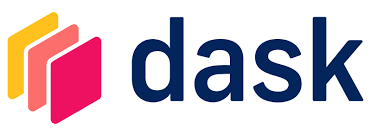Alternatives to Pandas DataFrame for Working with Mining Data as a python-geologist
- mark
- May 22
- 3 min read
If you work with drilling, large bloc models or other geospatial datasets, chances are you've used pandas to wrangle data. It's a powerful tool and a familiar part of many geoscience workflows. But it does have limits, especially with large files or long processing chains. As datasets grow and the need for speed increases, pandas can start to slow you down.
Here are a few alternatives worth knowing about, each with its own strengths depending on your needs.
1. Polars

Polars is a fast, modern alternative to pandas that's designed to handle large data efficiently. It’s written in Rust and uses Apache Arrow under the hood, which allows it to process data faster and use memory more efficiently. For large tables like multi-year assay results or merged drill logs, Polars can run many times faster than pandas.
The syntax is clear and familiar, and it supports both eager and lazy execution. That means it can hold off on running operations until everything is set up, then optimize the process automatically. It’s a smart choice for anyone working with large CSVs or complex groupings.
2. Dask

Dask is a good option when your data doesn’t fit in memory. It works a lot like pandas but spreads the work across your CPU cores or even across multiple machines. If you're combining multiple drill hole logs, assay tables, and geological models into one workflow, Dask can help keep things moving without overloading your RAM.
It won’t speed up everything out of the box, but for filtering, grouping, and joining large datasets, it can make a big difference.
3. Vaex

Vaex is designed for fast exploratory analysis of large datasets. It uses memory-mapped files and lazy evaluation, which means it doesn’t load everything into memory at once. This makes it ideal for quickly filtering, plotting, or summarizing large volumes of data—think millions of geochemical or terrain records.
If you often use pandas for quick checks or plots on big CSVs, Vaex might be a better fit.
4. Modin

Modin is the easiest way to speed up existing pandas code without rewriting it. You can keep your current workflow but swap in Modin to take advantage of parallel processing under the hood. It’s especially useful for legacy scripts or notebooks that need a performance boost without major changes.
Just change your import line from import pandas as pd to import modin.pandas as pd and you’re good to go.
Which One Should You Use?
Use case | Tool to consider |
Large datasets on a single machine | Polars |
Data that doesn’t fit in memory | Dask |
Fast EDA without memory pressure | Vaex |
Quick speed-up for existing pandas code | Modin |
A Quick Example
Let’s say you’re filtering assay results with over 10 million records and grouping them by lithology.
Using pandas:

import pandas as pd df = pd.read_csv('assays.csv')
df = df[df['grade'] > 0.5]
summary = df.groupby('lithology')['grade'].mean()This works, but it loads the full file into memory and can slow down.
Using Polars:
import polars as pl
df = pl.scan_csv('assays.csv')

summary = (
df.filter(pl.col('grade') > 0.5)
.groupby('lithology')
.agg(pl.col('grade').mean())
.collect()
)Same result, but faster and more memory-efficient. Polars can handle this sort of workload with ease, even on standard laptops.
Final Thoughts
Pandas is still a great tool for many tasks, especially when you're working with manageable-sized data. But as your geological datasets grow and your workflows get more complex, it's worth exploring faster and more scalable tools.
Polars is a great starting point for most people. It's fast, modern, and doesn't require a steep learning curve. If you're already bumping up against performance limits, try swapping out pandas in a few of your workflows and see the difference.
If you’ve been experimenting with these tools or have questions about switching over, get in touch. We’re always happy to share what’s worked in real mining data projects. Book a meeting




Comments